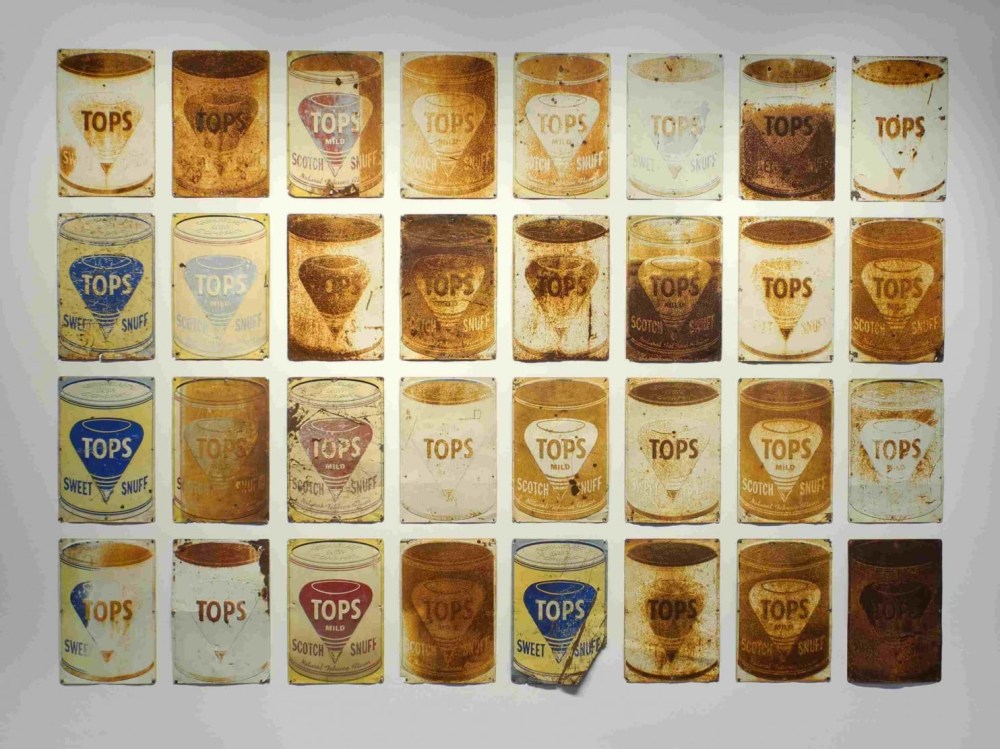
William Christenberry has lived in Washington for more than 40 years, but he still regularly sifts the soil of his childhood home, rural Alabama. The South nurtures, inspires and probably terrifies him, as it has other noted artists and writers from the region. Christenberry’s current show at Hemphill Fine Arts, “Assembled Memory,” mixes it all together, much as it combines photography, painting and sculpture.
The retrospective opens with “Alabama Wall,” assembled in 1975 from 32 found metal signs, rusted and weathered in various lovely ways. Every sign peddles Tops Snuff, and the repetition suggests a down-home Warhol. So does a silk-screen of the same signs, arranged differently and finished with hand-painted details.
Christenberry’s photos of rusted, misaligned or long-unpainted facades have been shown often, but they still look great. They’re alluring simply for their colors and compositions, but are also suggestive of a place where something’s just a little off. The artist makes that explicit with work based on the iconography of the Ku Klux Klan, whose hoods he sometimes melds with the simple shapes of the white frame houses he constructs. This show includes two Klan pieces, one an eerie, red-tinted 1983 hologram.
Less familiar are Christenberry’s ink paintings, mostly made since 2004. An untitled piece from 1959 mixes acrylic and ink with a fluidity that presages the later work. More recently, the artist has been experimenting with backdrops as well as media and forms: One painting was done on sandpaper, and two employ white ink atop a blue acrylic-pigment field. Stark yet delicate, the latter also summon images from memory, as is made explicit by the presence of a high-contrast 1962 photograph whose basic format resembles that of the paintings. All three show Southern trees, seemingly fragile yet deeply rooted.